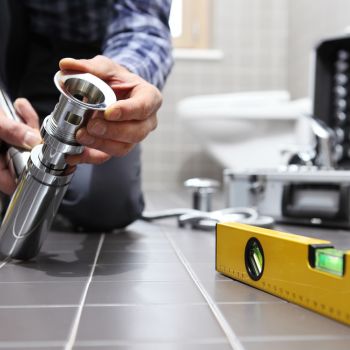Common Plumbing Code Violations
 Cutting corners can lead to plumbing that’s not up to code. Whether you have an older home or a family member repaired your pipes, DIY can be cost-effective upfront but pose issues if you attempt to resell the property or have a plumber examine your system. You also expose yourself to higher risks for leaks and other safety concerns. Understand common plumbing code violations that can arise.
Cutting corners can lead to plumbing that’s not up to code. Whether you have an older home or a family member repaired your pipes, DIY can be cost-effective upfront but pose issues if you attempt to resell the property or have a plumber examine your system. You also expose yourself to higher risks for leaks and other safety concerns. Understand common plumbing code violations that can arise.
Improper Materials
Cheap labor or plumbing fixtures that haven’t been touched in years may result in one of two scenarios violating current plumbing codes:
- You end up with corrugated pipes or another material no longer in use for safety reasons, like iron or lead.
- Your pipes get repaired with rubber fittings that eventually crack and leak, contributing to rot and mold damage.
Trap Concerns
Older or incorrectly installed traps violate existing plumbing codes. In particular, S-traps are now avoided due to a lack of venting. The typical home plumbing system requires correctly vented traps that prevent sewer gas, a flammable compound, from drifting back into your home.
P-traps create more ideal conditions. The water stays in the trap and sewer gas is vented through the property’s roof. This design greatly reduces odors entering your home and a potential explosion.
Improperly Sized Drainage Piping
In general, any new pipes installed need to be sized properly for your system and local codes. More specifically, pipes that are too narrow for their respective drain easily back up or cause water to move through at a slower pace.
Temperature and Pressure Relief Valve Concerns
Also called a T and P valve, this water heater feature assists with temperature and pressure regulation, releasing water to prevent irreparable damage. A T and P valve engages the drain if the water temperature or pressure rises above recommended limits, both signs of a broken thermostat.
However, the valve can leak with age. Plugging it seems like a simple fix but doing so causes pressure to build up inside and may result in a potentially deadly explosion.
Incorrectly installing the valve may also affect operation. As one major risk, the heater no longer drains the water in response to an excessive pressure or temperature reading. This scenario can also result in an explosion.
Not Enough Space Around a Toilet
You should be able to sit on your toilet without part of your body hitting an adjacent wall. In turn, plumbing codes specify a minimum clearance for installing a toilet, as well as other bathroom appliances. Generally, this is 15 inches from their center to any wall or another appliance or device. Toilets, tubs and sinks also need at least 30 inches between their centers.
Cleanout Concerns
Plumbers utilize cleanout points to access and unclog a drain. Even if the plumbing is updated, the number of points required for your home and their respective port locations should not be disturbed.
The amount depends on the size of your home and its plumbing system. Generally, homes have cleanouts every 100 or fewer feet. If the incline of a building sewer or other waste line changes by 45 degrees or more, a new cleanout line is needed to accommodate this shift. Additionally:
- Cleanout lines should never be obstructed, including by cabinets, belongings or machinery.
- Cleanout lines should never be placed in an area that’s prone to flooding – for example, a basement.
- Cleanout lines should not be installed near an electrical box or equipment.
- Any cleanout associated with your home’s main sewer line should not double as a drain.
- The main sewer cleanout line should remain sealed and only be opened for cleaning.
Water Shutoffs
All water shutoff valves need to be functional. Otherwise, the water will continue to run as you attempt to perform repairs and your home risks experiencing leak-related damage.
Drain Pipe Slope Issues
Your pipes are not angled at random; their positioning optimizes flow and reduces clogging. One-quarter inch per one foot of horizontal pipe is considered the average slope. The slope also should not exceed one-half inch per one foot of horizontal piping specifically for this reason. Anything steeper can affect how well water and waste travel through your pipes to the sewer.
Are you concerned about older pipes or poorly performed repairs? Contact MJ Fahy & Sons to have your plumbing examined and repairs made to get the system up to code.




